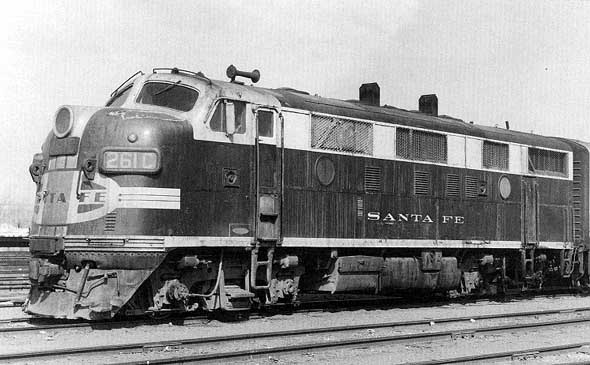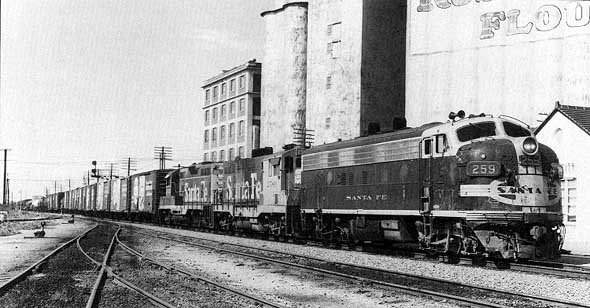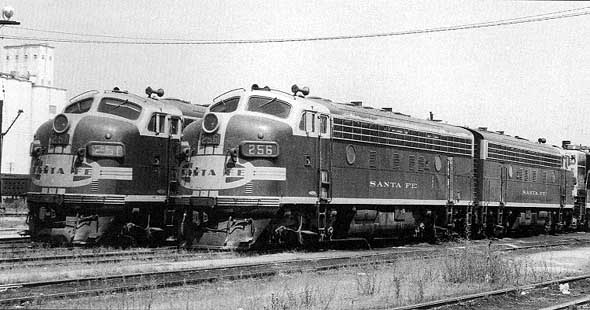 261C was built without stainless steel grilles and was never retrofitted with them. She looks a little tired after 24 years of service here at Amarillo in April 1975. She eventually became CF7 2446.  259L (with a CF7 and a GP7 in tow) is in charge of a southbound freight at Ponca City, Oklahome this May day in 1975. 259 was built without stainless steel grilles, but acquired vertical slit grilles at some point in time. Lower numbered 200's sported horizontal slit grilles.  256 and 251 await assignments at Emporia in August 1969. Neither of these units has nose MU capability. Most 200 class units received nose MU connections by this time. Emporia was F-unit heaven for railfans in the late 60's and early 70's. In 1991, the entire engine faciltiy including the roundhouse, turntable and tracks is only a memory. |
|
Atheam currently markets their dual head light F7A and 7B in the yellow warbonnet paint scheme with number 271C and 235C known to exist on the A unit. 271C is correct for the one 200 class F7A that actually received the yellow warbonnet scheme but 271C was a late production unit with 48" D/B fan and vertical slit grilles as well as other major differences which makes the Athearn model highly inaccurate for this unit. Except for the dual headlight and steam generator fittings, the Athearn carbody is correct for number 235C, but that unit never wore the yellow warbonnet scheme. The B-unit in the yellow warbonnet scheme is actually fairly accurate for B-units in the 202 through 258 numbers that might have received this paint scheme, with a wide yellow stripe at the bottom of the carbody and the stainless steel grilles painted silver. I am not certain how many B-units from that number group received the yellow. Warbonnet paint as photos of B-units are difficult to identify unless the photographer wrote down the unit number at the time he shot the picture. I do know several 200 class boosters got this paint, but I do not have a specific list of which ones. Stewart’s fine F7 has not been produced in a factory painted Santa Fe freight versionas of this writing, but since they have the correct F7 shell already available, perhaps they will produce a single headlight version in Santa Fe freight colors eventually. If they do make a freight F7A, hopefully they will produce an F7B as well. In their later years, most of the 200 class A-units were equipped with nose MU connections, so any number of A-units could be run together, but some B-units in any given lashup would be much more typical of how the Santa Fe ran them. Other plastic F7’s have been available from time to time, some in Santa Fe freight colors, some not. Penn Line, Revell, Tyco/Mantua and a host of others have all produced F-units, but none are even close to the Stewart or Athearn F7 for accuracy or running qualities. |







